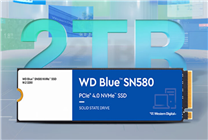### Summary:
– **Nvidia Unveils Revolutionary Vera Rubin Superchip**: The new superchip features groundbreaking architecture and significantly enhanced performance.
– **Massive GPU Capabilities**: With capabilities reaching 50 PFLOPS and innovative HBM4 memory, the superchip promises exceptional processing power.
– **Future-Ready Technology**: Expected production timelines and advancements suggest Nvidia’s initiative to stay ahead in the competitive tech landscape.
—
At the recent GTC 2025 conference, Nvidia’s CEO, Jen-Hsun Huang, showcased the next-generation **Vera Rubin superchip** for the first time, marking a significant advancement in semiconductor technology. This unveiling is poised to have a profound impact on the computing landscape and the data processing capabilities of future technologies.
### Advanced Architecture
The **Vera Rubin superchip** integrates a robust architecture that features a **Vera CPU** paired with two potent **Rubin GPUs**. This configuration supports up to **32 LPDDR memory slots**, employing the latest **HBM4 high-bandwidth memory** technology. Such an architecture is designed to enhance performance metrics significantly.
Huang detailed that the Rubin GPU has returned for laboratory testing and represents the inaugural sample produced by TSMC. Each GPU consists of two GPU core chips, aptly termed **Reticle-sized dies**. Furthermore, the Vera CPU houses **88 custom Arm architecture cores**, enabling support for up to **176 threads**, amplifying its computational prowess.
### Targeted Production Timeline
According to Nvidia’s strategic roadmap, the **Rubin GPU** is anticipated to enter mass production by the **third or fourth quarter of 2026**, coinciding with the existing **Blackwell Ultra “GB300” Superchip Platform**. The development timeline is comparable to, if not earlier than, the current superchip’s full-scale production, ensuring that Nvidia maintains its leadership in the high-performance computing market.
### Exceptional Performance Metrics
The **Vera Rubin NVL144 Platform** is engineered to deliver an astonishing **50 PFLOPS** at FP4 accuracy, backed by **288 GB of HBM4 video memory**. Such specifications not only highlight the superchip’s capabilities but also paint a picture of a system that caters to diverse computational tasks, from artificial intelligence to complex simulations.
Critically, the platform achieves **3.6 Exaflops for FP4 inference** and **1.2 Exaflops for FP8 training**. Compared to its predecessor, the **GB300 NVL72**, this represents an increase of approximately **3.3 times in computing power**. Additionally, with a total system memory bandwidth soaring to **13TB/s** and a fast storage capacity of **75TB**, efficiency and speed are paramount in this new architecture. The enhancements include **double NVLINK and CX9 communication capabilities**, achieving maximum rates of **260TB/s** and **28.8TB/s**, respectively.
### Looking Ahead: Future Innovations
Nvidia has ambitious plans beyond the **Vera Rubin superchip**. By the **second half of 2027**, the company intends to launch a higher-end **Rubin Ultra NVL576 Platform**. This next iteration will expand the NVL configuration from **144 to 576**, while retaining the current CPU architecture. An upgrade to **four Reticle-sized cores** is expected, allowing the platform to achieve up to **100 PFLOPS at FP4** and incorporating **1 TB of HBM4e memory** distributed across **16 video memory interfaces**.
The Rubin Ultra NVL576 platform is projected to reach **15 Exaflops for FP4 inference** and **5 Exaflops for FP8 training**, representing a remarkable **14fold improvement over the GB300 NVL72**. Further optimizations in HBM4 memory bandwidth aim for an impressive **4.6PB/s**, with fast storage capacity expectations hitting **365TB**. Communication capabilities between NVLINK and CX9 are set to improve by **12 and 8 times**, attaining maximum speeds of **1.5PB/s** and **115.2TB/s**, respectively.
### Conclusion
Nvidia’s unveiling of the **Vera Rubin superchip** at GTC 2025 cements its commitment to pushing the boundaries of high-performance computing. With formidable specifications, a clear production timeline, and a focus on future advancements, Nvidia is well-positioned to remain a leader in the tech industry.








